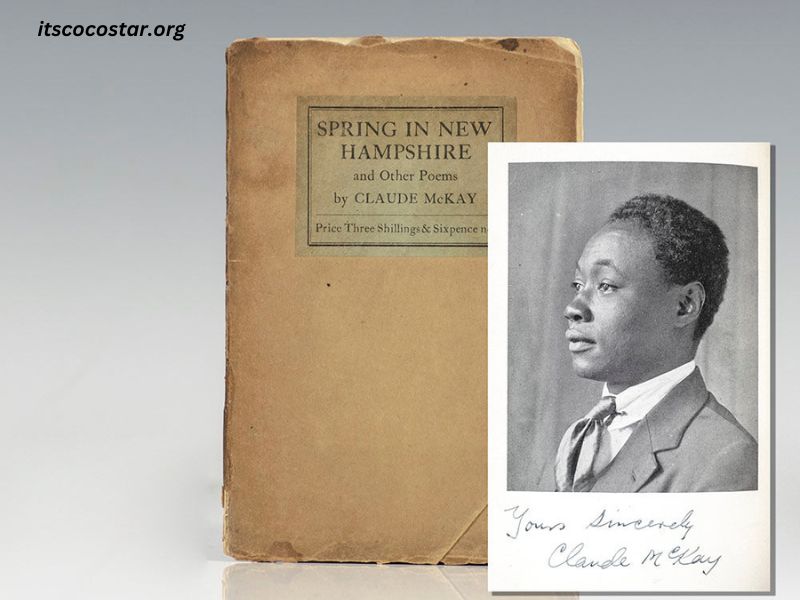The Harlem Renaissance, a cultural movement that flourished during the early 20th century, marked a period of profound social, artistic, and intellectual awakening for African Americans. It not only reshaped the literary, musical, and artistic landscapes of the time but also laid the foundation for many future generations of Black artists, writers, and intellectuals. At its heart, this movement was a celebration of Black culture, identity, and history, as well as a platform for challenging the racial inequalities of the era.
While the Harlem Renaissance was driven by a variety of influences, one poem is often credited with catalyzing the movement. This poem, “The Negro Speaks of Rivers” by Langston Hughes, is regarded by many scholars and cultural historians as the piece of writing that helped spark the Harlem Renaissance. Through this iconic poem, Hughes was able to encapsulate the profound sense of cultural pride and historical awareness that would come to define the era.
The Context of the Harlem Renaissance
Before diving into the specific poem, it is important to understand the broader context of the Harlem Renaissance. The 1920s were marked by significant social and political changes in the United States. The aftermath of World War I, combined with the Great Migration, which saw millions of African Americans move from the rural South to the urban North, particularly to Harlem in New York City, created an environment ripe for cultural change. This migration allowed African Americans to escape the intense racial discrimination and segregation of the South, leading to greater opportunities for employment, education, and cultural expression.
However, while life in the North offered new possibilities, racial discrimination remained pervasive. The African American community had to navigate not only the economic challenges of the time but also the psychological toll of ongoing prejudice and racism. It was against this backdrop that the Harlem Renaissance emerged, providing an opportunity for Black Americans to celebrate their heritage and assert their cultural pride.
This period saw a surge in African American literature, art, music, and performance. Jazz, blues, and gospel music blossomed, and writers like Zora Neale Hurston, Claude McKay, and Countee Cullen gained recognition for their works. But, perhaps more than any other figure, Langston Hughes became one of the defining voices of the Harlem Renaissance. And it all began with one key poem: “The Negro Speaks of Rivers.”
The Birth of “The Negro Speaks of Rivers”
Written in 1920 when Hughes was just 18 years old, “The Negro Speaks of Rivers” was one of his earliest published works. The poem was first published in the The Crisis, a magazine founded by W.E.B. Du Bois, which was one of the leading periodicals of the time and a critical outlet for African American intellectuals and activists.
The poem’s power lies in its ability to tap into the deep cultural and historical consciousness of the African American experience. Hughes was deeply influenced by his travels, including a trip to Africa, and this exposure to different cultures and histories informed his worldview and writing. “The Negro Speaks of Rivers” is both a personal and collective meditation on the African diaspora and the enduring connection of Black people to the world’s most ancient civilizations.
Analysis of the Poem
The poem opens with the line:
“I’ve known rivers:
I’ve known rivers ancient as the world and older than the flow of human blood in human veins.”
Immediately, Hughes establishes the theme of deep historical connection. Rivers, in this poem, are metaphors for life itself—ancient, unyielding, and ever-flowing. They represent the enduring strength and resilience of Black people throughout history. By beginning with this metaphor, Hughes suggests that the African American experience is ancient, going back to the earliest civilizations of Africa and the Middle East, predating the horrors of the transatlantic slave trade, racism, and colonization.
As the poem progresses, Hughes references specific rivers such as the Nile, the Congo, and the Euphrates. These rivers were not only physically significant to the development of early civilizations but were also central to the cultural and spiritual life of the African peoples. By invoking these rivers, Hughes connects African Americans to a rich cultural heritage, one that spans the vast and varied history of the African continent.
“My soul has grown deep like the rivers.”
This line is particularly significant as it encapsulates the poem’s central theme of growth, endurance, and wisdom. Hughes suggests that the soul of Black people has matured and evolved through time, much like the rivers, absorbing the wisdom, pain, and beauty of the past. There is a sense of collective consciousness here, as Hughes speaks for the African American community, asserting that their history, despite the trauma of slavery and oppression, is one of survival and strength.
The Impact of “The Negro Speaks of Rivers” on the Harlem Renaissance
Langston Hughes’s “The Negro Speaks of Rivers” holds the distinction of being the first poem to truly capture the essence of the Harlem Renaissance. It was not just a poem; it was a statement of identity and self-worth. Hughes’s use of historical references and the personification of rivers allowed him to bridge the gap between the ancient African past and the present struggles of Black Americans in the early 20th century.
The poem resonated deeply with African American readers, as it reaffirmed their connection to an ancient heritage that was often overlooked or misrepresented in mainstream American culture. It gave them a sense of pride and solidarity, allowing them to see themselves not as marginalized, but as integral to the history of civilization itself. In many ways, this poem helped lay the intellectual and cultural groundwork for the Harlem Renaissance.
The Harlem Renaissance was, at its core, a movement that sought to redefine the narrative surrounding Black identity. Writers, poets, artists, and musicians involved in the movement were determined to assert their cultural significance and to celebrate the beauty and complexity of Black life. “The Negro Speaks of Rivers” fit perfectly within this framework, offering a profound vision of African American identity rooted in history, dignity, and strength.
Langston Hughes: The Voice of the Harlem Renaissance
While “The Negro Speaks of Rivers” was the spark that ignited the flame of the Harlem Renaissance, Langston Hughes’s role in the movement cannot be overstated. Hughes became a leading figure in the Harlem Renaissance, using his voice to address the realities of racial oppression, the joy of Black culture, and the complexities of being Black in America.
Hughes’s poetry, essays, and plays throughout the 1920s and beyond brought a distinct, rhythmic style to African American literature. His use of vernacular speech and jazz-inspired rhythms set him apart from other poets of the time and made his work accessible to a wide audience. Hughes’s portrayal of Black life—both the struggles and the triumphs—was unapologetic and deeply human.
In addition to his literary work, Hughes was a key figure in the intellectual and artistic community in Harlem. He collaborated with musicians like Duke Ellington and helped shape the musical landscape of the era, giving birth to what would later be known as the Harlem Jazz Renaissance.
Conclusion
“The Negro Speaks of Rivers” is often credited with starting the Harlem Renaissance because of its profound exploration of African American identity, culture, and history. Langston Hughes’s ability to weave together the personal and the collective, the ancient and the modern, in such a powerful and accessible way made this poem a rallying cry for the Harlem Renaissance. Through this simple yet profound work, Hughes was able to capture the essence of a cultural revolution that would change the landscape of American art and culture forever.
While the Harlem Renaissance was a complex and multifaceted movement, Hughes’s poem remains its beating heart—a reminder of the richness and resilience of Black history, and a testament to the power of poetry to inspire social and cultural change. “The Negro Speaks of Rivers” didn’t just start a movement; it helped define it, setting the stage for the remarkable literary, artistic, and intellectual achievements of the Harlem Renaissance that followed.






